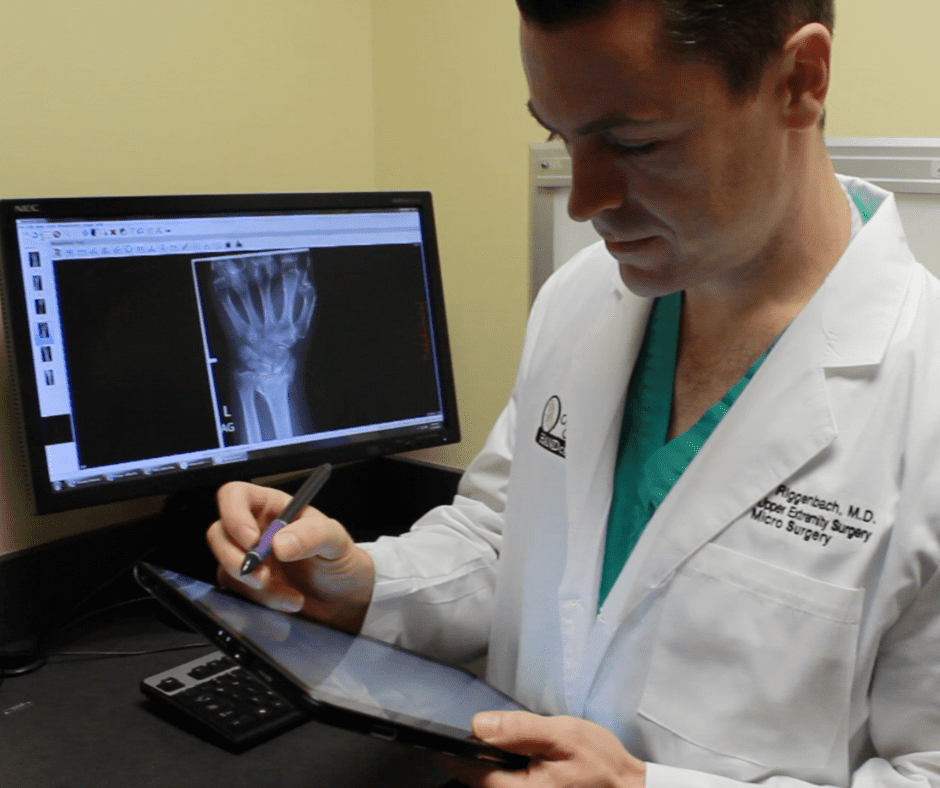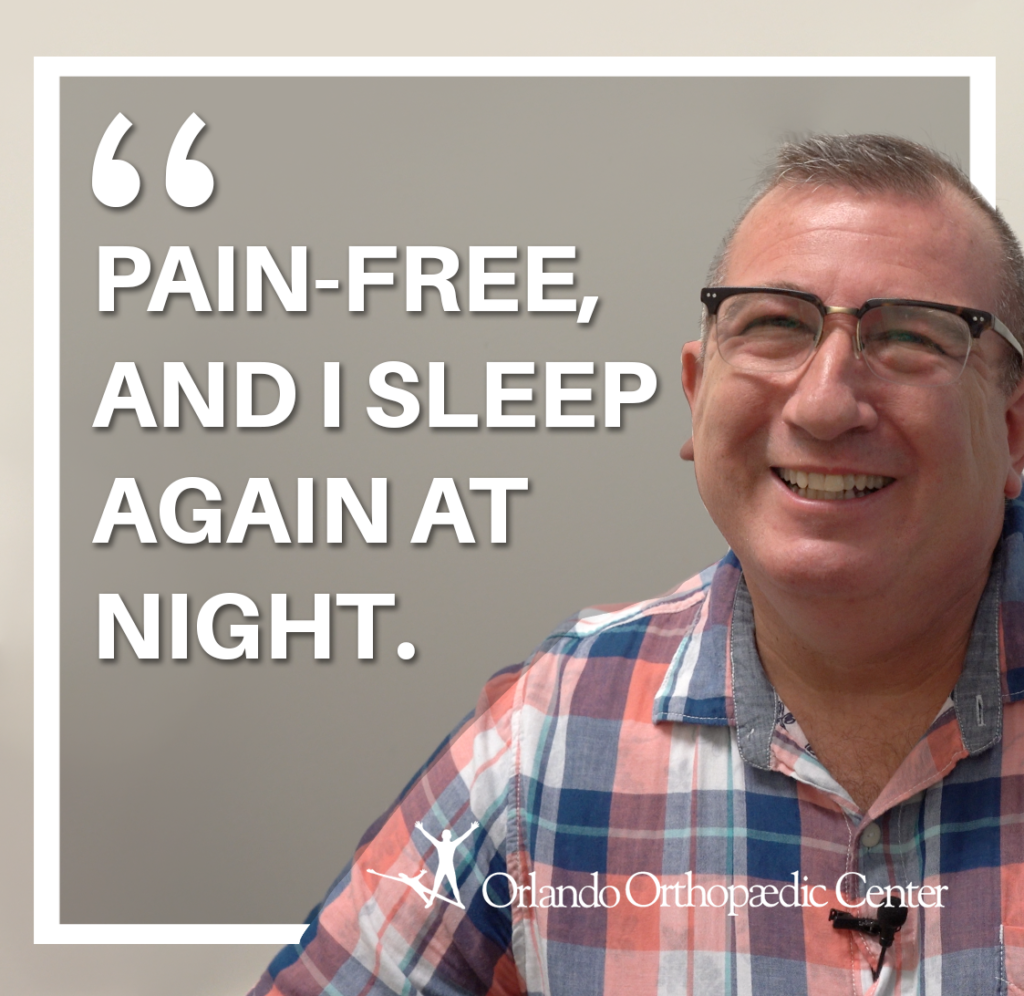How Can Outpatient Total Shoulder Replacement Help a Patient Sleep at Night?
- What Conditions Necessitate a Total Shoulder Replacement?
- How is Outpatient Total Shoulder Replacement Performed?
- What Are Benefits to Outpatient Total Shoulder Replacement?
- What is the Recovery Process for Outpatient Total Shoulder Replacement?
Thanks to his outpatient total shoulder replacement, Bill has no pain in his left shoulder. He can finally sleep through the night for the first time in 11 years. For several years, Bill suffered from chronic shoulder pain with no solution in sight because other orthopaedic specialists he consulted said there was little they could do.
That all changed when Bill was referred to Michael D. Riggenbach, M.D., a board-certified orthopaedic surgeon at Orlando Orthopaedic Center, specializing in hand and upper extremity surgery, peripheral nerve surgery, and microsurgery.
“My biggest benefit is that I’m pain-free, and I sleep again at night. That’s one of the biggest things that I can say, and I’m so glad that I came,” says Bill.
What Conditions Necessitate a Total Shoulder Replacement?
 When people experience severe chronic pain and very limited mobility in the shoulder joint from arthritis or as a result of a severe fracture, the solution may lie in shoulder replacement surgery, also known as shoulder arthroplasty.
When people experience severe chronic pain and very limited mobility in the shoulder joint from arthritis or as a result of a severe fracture, the solution may lie in shoulder replacement surgery, also known as shoulder arthroplasty.
A variety of arthritic and degenerative conditions can damage the cartilage that supports and stabilizes the shoulder joint. These include:
- Osteoarthritis
- Rheumatoid arthritis
- Post-traumatic arthritis
- Rotator cuff tear arthropathy
- Severe fractures
- Failed previous shoulder replacement surgery
“Anybody with a shoulder injury knows it’s hard to sleep at night,” says Bill. “Anything you do, any odd movements, you strain it, you hear it, you feel it. We moved to Florida from New Jersey in 2015. We saw other doctors, and they all said there was nothing they could do for me. I lived in constant pain for another four years, sleeping about three, maybe three and a half hours a night.”
How is Outpatient Total Shoulder Replacement Performed?
During outpatient total shoulder replacement, the surgeon removes the injured arthritic ball and replaces it with a metal rod placed inside the upper arm bone with a smooth metal ball at the end. The corroded socket (glenoid) is repolished and capped with a plastic or metal component.
The shoulder contains two joints. The one the surgeon works on during a total shoulder replacement is the ball-and-socket joint. It is made up of the round end of the arm bone (humerus), a curved bowl-like surface (glenoid fossa of the scapula), cartilage, tendons, and ligaments. The shoulder allows the arm to lift, twist, and bend both forward and backward and gives it the greatest range of motion of any joint in the body. As the cartilage erodes and wears down over time, the bones can come into contact with each other causing pain, discomfort, and stiffness.
What Are Benefits to Outpatient Total Shoulder Replacement?
 Benefits of outpatient shoulder replacement surgery include:
Benefits of outpatient shoulder replacement surgery include:
- Patients return home within hours of surgery compared to an overnight stay in the hospital with a traditional inpatient procedure
- Ease of access when checking in and checking out at an outpatient surgery center
- Smaller risk of infection from an outpatient surgery center versus a hospital
- The ability to begin outpatient physical therapy soon after the procedure
Bill’s surgery was performed in the Orlando Orthopaedic Center Outpatient Surgery Center. He was finished with surgery and on his way home within several hours, making it a more convenient experience for him.
“I was referred to Dr. Riggenbach, and it was the best decision I ever made to come and see him,” says Bill. “He sat down with me. He explained everything. He told me, ‘This is what you have, and this is what we can do to fix it.’ I came in, did the surgery, and it’s just the best thing I ever did.”
What is the Recovery Process for Outpatient Total Shoulder Replacement?
After surgery, the arm may be held by a brace, but can be removed to engage in light therapy. Patients may be given antibiotics to prevent infection and pain medication to manage post-operative discomfort.
Surgeons will often underscore the point that surgery is just the first step to complete recovery and full functioning. Physical therapy is required to maximize the results of total shoulder surgery, while offering the best chance for a complete recovery.
Grateful for his successful surgery and recovery, Bill has a new lease on sleep and on life. “I am pain-free from what I had before, and I actually sleep at night,” he says. “It’s nice to be able to sleep for the first time in 11 years.”


